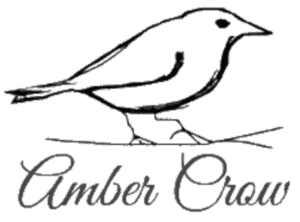All children have different learning styles. They learn through a combination of observing, listening, and experiencing. By identifying your child’s preferred learning style, you can help them develop strategies for studying and understanding information more effectively.
The Importance of Identifying Your Child’s Learning Style

Identifying Strengths and Weaknesses
Understanding a child’s learning style is not just about determining how they absorb information best, but it also leads to significant insights about their strengths and weaknesses.
For example, visual learners are good at remembering images and spatial information, strengthening them in areas such as geometry or art. However, these learners might struggle in areas that require auditory or linguistic instructions. Knowing this can guide parents and educators to help children maximize their strengths while offering specialized support for their weak points.
Moreover, this awareness can equally empower children and boost their confidence. They can use their strengths as stepping stones to overcome challenges and gradually improve their weak points. By accentuating their assets while also acknowledging areas they need to grow, children can achieve a more balanced learning experience and develop a more resilient mindset towards education.
Tailoring Education to Fit Learning Styles
In traditional education systems, there’s a proverbial “one size fits all” approach, despite students having different learning styles. Understanding your child’s preferred learning style allows you to customize their education to align with this style, increasing their ability to absorb and retain information.
For example, if your child is an auditory learner, using podcasts, audiobooks, or verbal communication can help them grasp concepts better. Conversely, if your child is a kinesthetic learner, creating learning experiences that involve movement and tactile involvement, such as labs or hands-on activities, would be more beneficial.
This tailoring is not about making learning easier but about making it more effective. It creates an environment where children can explore their full potential and foster a broader and deeper understanding of the learning material, transforming the educational experience from a chore to an adventure. A tailored educational approach not only caters to a child’s learning preferences but can also stimulate motivation and ignite a genuine passion for learning.
Understanding the Four Main Learning Styles

There are four main learning styles identified by the VARK model: Visual, Auditory, Reading/Writing, and Kinesthetic. Developed by educator Neil Fleming, this model provides a helpful framework for understanding how different people learn. Each learning style has characteristics that can influence both how a student learns, interprets, and responds to their environment:
Visual Learning
Visual learners process information best when they can see it. They typically:
- Create pictures, diagrams, or doodles during note-taking
- Feel comfortable with charts, maps, and infographics
- Have a knack for spotting patterns and interpreting visual information
- Learn effectively with color coding, illustrations, or mind maps.
Often they are great illustrators, able to create pictures, diagrams, or doodles while taking notes. They are fond of charts, maps, and infographics because these tools help them visualize the information, making it easier to comprehend and recall. Visual learners can spot patterns, and interpret and create visual representations of information, like graphs and charts. Consequently, they tend to understand information best when it’s presented via diagrams or other visual aids.
Teaching tactics for visual learners might include color coding, illustrations, and ‘ mind mapping,’ a technique that can help visualize relationships between different pieces of information.
Auditory Learning
Auditory learners excel in situations where they can listen and speak. They usually:
- Participate actively in group discussions, and enjoy listening to lectures
- Remember things better when they say them aloud
- Gain knowledge effectively using audiobooks, oral presentations, or group chats
- Benefit from reading aloud or listening to recorded lectures.
They excel in situations where they can participate in group discussions, listen to lectures, or have the ability to recite information. They may find that they remember things better when they say them out loud. Audiobooks, oral presentations, group chats, or having someone quiz them verbally can help enhance their learning process.
Reading aloud or listening to recorded lectures could significantly benefit auditory learners. For them, verbalization is crucial; the spoken word carries more meaning and substance than mere written text.
Reading/Writing Preference
People with a preference for Reading/Writing learning style enjoy interacting with textual information. They are likely to:
- Excel at summarizing information and composing essays
- Enjoy reading, note-taking, and exploring new vocabulary
- Engage with written exercises in textbooks and enjoy written homework
- Benefit from teachers providing lots of reading materials.
They prefer to interact with textual information, extracting and understanding information through the written word. These learners often excel at summarizing information, composing essays, or outlining chapters. They typically enjoy reading, taking notes, exploring and using new vocabulary, engaging with exercises in textbooks, and doing written homework and assignments.
To aid students with this style, educators can provide ample reading materials or encourage them to write essays or entries in a journal. The process of writing helps solidify learning, as it imposes an organizational structure that improves understanding and retention.
Kinesthetic Learning
Kinesthetic learners prefer to learn through movement and direct interaction. Typically, they:
- Use their bodies and sense of touch to gather information
- Learn effectively through direct interactions or experiments
- Enjoy role-playing activities, experiments, or field trips
- Benefit from using physical objects they can touch and manipulate.
They prefer to use their bodies and sense of touch to learn about the world. These learners often need to engage physically or experience things to learn effectively. Direct interactions or experiments, such as in lab settings or active demonstrations, will likely enhance their understanding.
Teaching methods for kinesthetic learners could include role-playing activities, experiments, field trips, or using physical objects that they can touch and manipulate. Appropriate resources could be tangible or involve movement, such as flashcards, manipulatives, or even apps on a tablet that require interaction. These learners might also benefit from short study intervals with lots of breaks for movement.
How Parents and Teachers Can Support Various Learning Styles

Support for Visual Learners
Parents and teachers can use visual aids, infographics, diagrams, and more classroom displays to help visual learners.
Support for Auditory Learners
For auditory learners, record lectures or discussions for later listening and encourage them to discuss what they’ve learned.
Support for Reading/Writing Preference Learners
Provide ample reading material, encourage note-taking, and assign writing tasks for reading/writing learners.
Support for Kinesthetic Learners
For kinesthetic learners, parents and teachers should use demonstrations and hands-on activities that allow the child to learn by doing.
The Future of Personalized Learning
As our awareness of unique learning styles expands, so too must our approach to education. Personalized learning that supports individual learning styles is the future of education.
The Difference Between Learning Styles and Learning Disabilities
A common misunderstanding about children’s education is the confusion between learning styles and learning disabilities.
While a unique learning style merely indicates a child’s preferred method for understanding information, a learning disability interferes with a child’s ability to process this information. Learning disabilities may present challenges, but with the right supportive strategies, children with these conditions can achieve their full learning potential.
Encouraging a Flexible Approach to Learning
While identifying a child’s preferred learning style is critical, it’s also crucial to encourage flexibility. Relying too heavily on a single learning style could limit their ability to adapt to different learning situations.
Hybrid learning strategies, which combine aspects of all four learning styles, can foster independence, adaptability, and resilience in students.
The Role of Technology in Supporting Diverse Learning Styles
In the digital age, technology can play a significant role in supporting different learning styles.
For example, podcasts and audio lessons can benefit auditory learners, while interactive games can facilitate learning for kinesthetic learners.
Technology, when used thoughtfully, can greatly enhance the learning experience for children with various learning styles.
The Impact of Understanding Learning Styles on Self-Esteem and Motivation
By understanding their preferred learning styles, children can become more confident learners. They can develop strategies that empower them to understand and retain information better, potentially leading to improved academic performance.
This success in learning can, in turn, boost their self-esteem and motivation, encouraging a lifelong love of learning.
FAQs – Understanding Different Learning Styles in Children
What Are the Four Major Types of Learning Styles?
The four major types of learning styles, as identified by the VARK model, are visual, auditory, reading/writing preference, and kinesthetic.
How Can I Identify My Child’s Learning Style?
To identify your child’s learning style, observe their habits and preferences when they are learning new information. For example, if they enjoy reading and writing, they may be a reading/writing learner. If they enjoy moving around and using their hands, they may be a kinesthetic learner.
Why Is It Important To Understand a Child’s Learning Style?
Understanding a child’s learning style is crucial because it allows you to tailor their educational experience, making learning more effective and enjoyable for them. It helps in identifying their strengths and weakness, enabling focused and more personalized assistance.
Can a Child Have More Than One Learning Style?
Yes, many children often have a dominant style but are still capable of learning in other ways. A child with a dominant kinesthetic style, for example, might still enjoy and benefit from visual stimuli or benefit from reading and writing activities.
Wrapping Up Understanding Different Learning Styles in Children
Different children have different learning styles, and understanding these can significantly enhance their educational experience. As parents and teachers, it’s essential to identify and nurture these unique learning styles in children.
